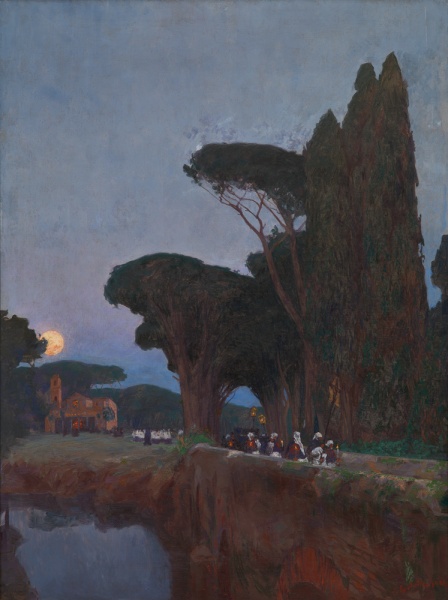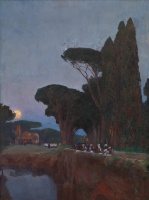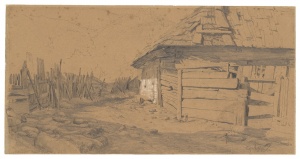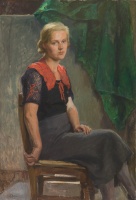

A Catholic Procession
| Author: | Jehudo Epstein (1870–1945) |
Jehudo Meier Epstein (b. 1870 Slutsk – d. 1945 Johannesburg, buried in Vienna) was the oldest child in an impoverished young family. His father, a scholar of the Talmud, earned his living by teaching Hebrew to children. Epstein studied briefly at the Vilnius School of Drawing and the Imperial Academy of Art in St Petersburg. At the age of 18 he went to Vienna, where he studied at the Imperial Academy from 1888 to 1894, and in 1924 he became a professor. He was twice a recipient of a Michael Beerschen scholarship, which enabled him to travel to Italy. During the First World War, Epstein worked as an official artist for the Austrian army. After the war, he founded an art studio in Vienna and became famous as a portraitist. He loved studying old Jewish manuscripts, and the themes of his works were often based on the Old Testament and Jewish religious and literary texts. In 1920 he held a solo exhibition in Vienna. He and his wife emigrated to South Africa in 1935, where he lived until his death.
Source: Ellex Valiunas (LAWIN until 2015) art album: STORIES OF LITVAK ART (2023). Compiler and author Vilma Gradinskaitė.

Jehudo Meier Epstein (b. 1870 Slutsk – d. 1945 Johannesburg, buried in Vienna) was the oldest child in an impoverished young family. His father, a scholar of the Talmud, earned his living by teaching Hebrew to children. Epstein studied briefly at the Vilnius School of Drawing and the Imperial Academy of Art in St Petersburg. At the age of 18 he went to Vienna, where he studied at the Imperial Academy from 1888 to 1894, and in 1924 he became a professor. He was twice a recipient of a Michael Beerschen scholarship, which enabled him to travel to Italy. During the First World War, Epstein worked as an official artist for the Austrian army. After the war, he founded an art studio in Vienna and became famous as a portraitist. He loved studying old Jewish manuscripts, and the themes of his works were often based on the Old Testament and Jewish religious and literary texts. In 1920 he held a solo exhibition in Vienna. He and his wife emigrated to South Africa in 1935, where he lived until his death.
Source: Ellex Valiunas (LAWIN until 2015) art album: STORIES OF LITVAK ART (2023). Compiler and author Vilma Gradinskaitė.








